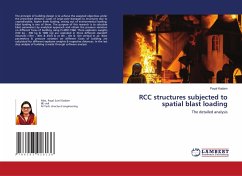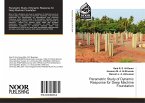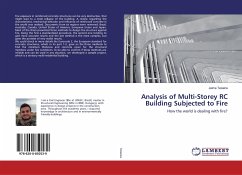Nowadays, modern structures are becoming slender, irregular shaped and long spanned which are susceptible to floor vibration phenomena. The purpose of this study is to determine the minimum slab thickness of a RCC slab to prevent undesirable vibration that will not cause discomfort to occupants and compare the obtained result with (Rakib, 2013) who investigated on this previously. Though American Concrete Institute (ACI) provided code for minimum slab thickness requirement from static deflection criteria, it might not be sufficient for dynamic serviceability like vibration. An investigation based on 3D finite element modeling of a reinforced RCC floor subjected to gravity load including partition wall load is carried out to study the natural floor vibration. The ANSYS model verification is done and is validated by ETABS modeling. The variation of the floor vibration is studied for several parameters such as different slab thickness, span length and floor panel aspect ratio.








